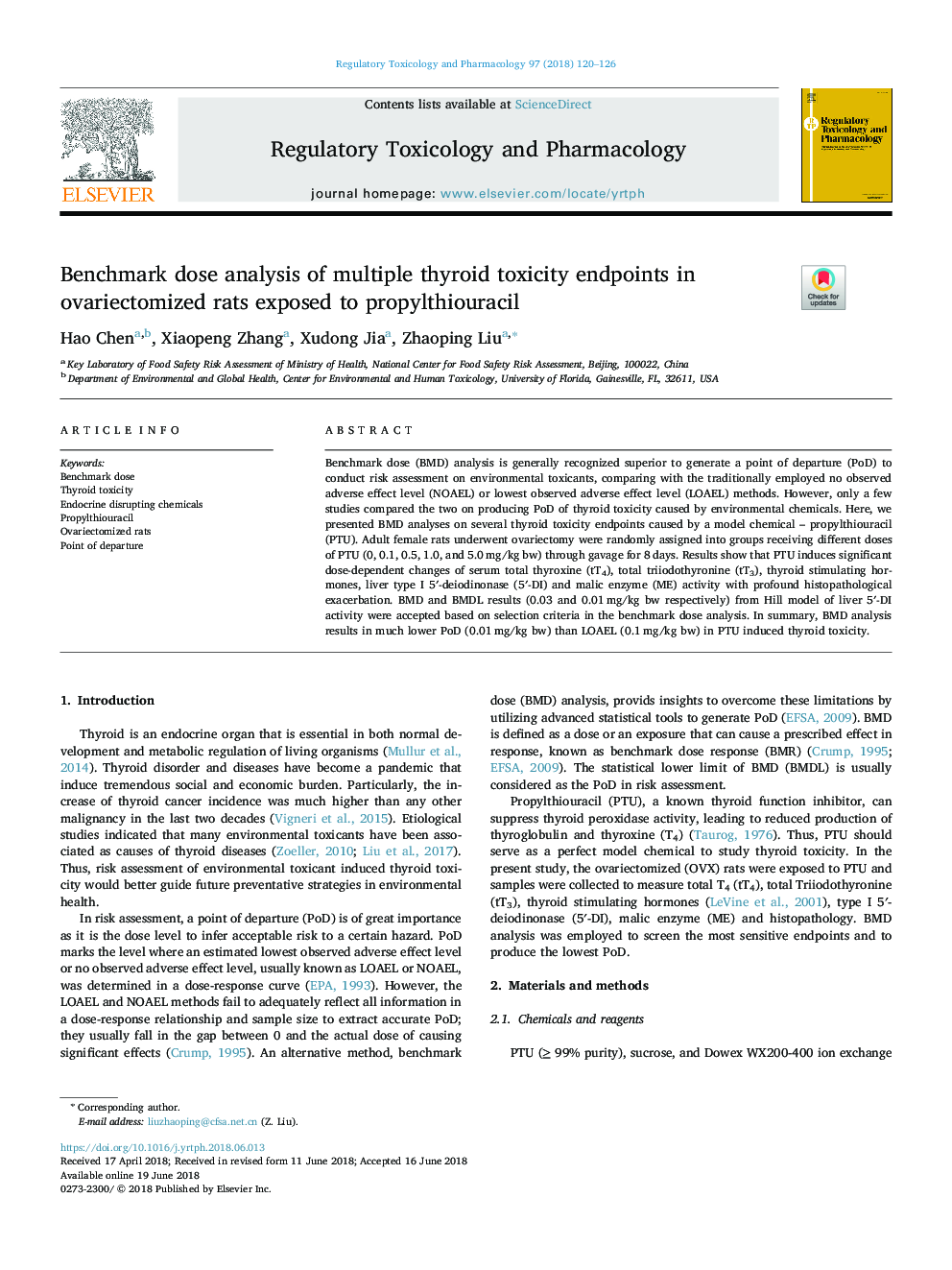| Article ID | Journal | Published Year | Pages | File Type |
|---|---|---|---|---|
| 8550949 | Regulatory Toxicology and Pharmacology | 2018 | 7 Pages |
Abstract
Benchmark dose (BMD) analysis is generally recognized superior to generate a point of departure (PoD) to conduct risk assessment on environmental toxicants, comparing with the traditionally employed no observed adverse effect level (NOAEL) or lowest observed adverse effect level (LOAEL) methods. However, only a few studies compared the two on producing PoD of thyroid toxicity caused by environmental chemicals. Here, we presented BMD analyses on several thyroid toxicity endpoints caused by a model chemical - propylthiouracil (PTU). Adult female rats underwent ovariectomy were randomly assigned into groups receiving different doses of PTU (0, 0.1, 0.5, 1.0, and 5.0â¯mg/kg bw) through gavage for 8 days. Results show that PTU induces significant dose-dependent changes of serum total thyroxine (tT4), total triiodothyronine (tT3), thyroid stimulating hormones, liver type I 5â²-deiodinonase (5â²-DI) and malic enzyme (ME) activity with profound histopathological exacerbation. BMD and BMDL results (0.03 and 0.01â¯mg/kg bw respectively) from Hill model of liver 5â²-DI activity were accepted based on selection criteria in the benchmark dose analysis. In summary, BMD analysis results in much lower PoD (0.01â¯mg/kg bw) than LOAEL (0.1â¯mg/kg bw) in PTU induced thyroid toxicity.
Keywords
Related Topics
Life Sciences
Environmental Science
Health, Toxicology and Mutagenesis
Authors
Hao Chen, Xiaopeng Zhang, Xudong Jia, Zhaoping Liu,
